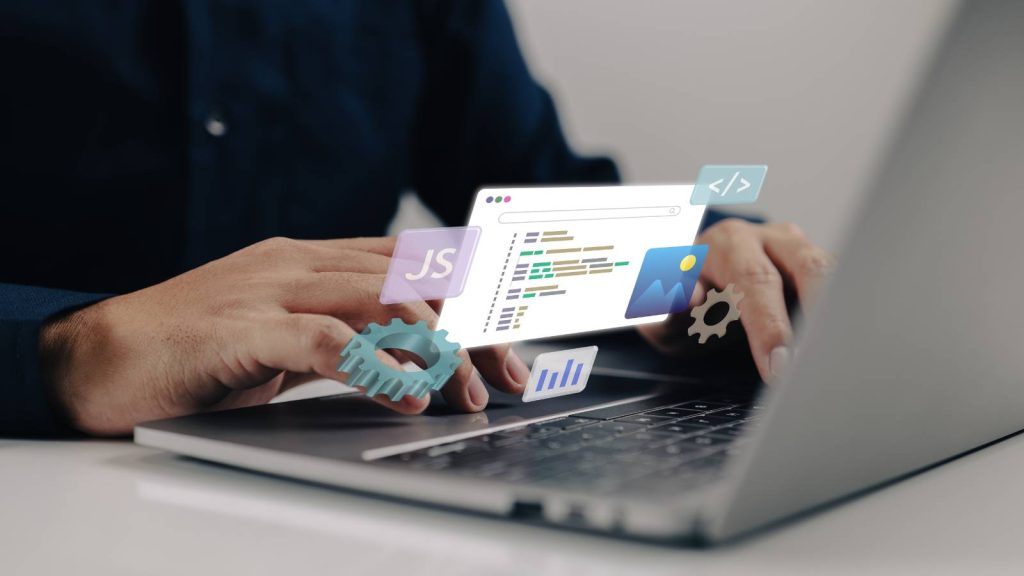Creating a website required advanced coding skills, knowledge of HTML, CSS, JavaScript, and often hiring developers, which can be both time-consuming and expensive. Rise of no code website builders has completely transformed this landscape, enabling anyone to create professional, functional websites quickly and efficiently without touching a single line of code.
10 Best Free Website Builders in 2025 (No Coding Needed!)
This guide will show everything you need to know to create pro websites using no code website builders, offering practical advice, tips, and insights.
Why No Code Website Builders Are a Game-Changer
A no code website builder is a software platform that allows users to design, develop, and manage websites using visual editors, pre-built templates, and drag-and-drop functionality, completely eliminating the need for coding. These platforms are designed for individuals and businesses who want to launch professional websites quickly while maintaining full control over design and functionality.
No code tools have democratized web design, making it accessible not just to tech experts but also to entrepreneurs, bloggers, small business owners, and even large organizations looking to streamline their digital presence.
By removing coding barriers, these platforms allow users to focus on creative design, content creation, and user experience, rather than spending weeks troubleshooting code. Today’s no code builders are not just beginner-friendly—they are also powerful enough to create scalable e-commerce sites, blogs, portfolios, membership sites, and even web applications.
Understanding No Code Website Builders
Definition and Key Features
At their core, no code website builders provide an intuitive drag-and-drop interface, enabling users to add elements like text blocks, images, buttons, forms, galleries, and interactive widgets. Key features include:
- Pre-designed templates: Ready-made designs tailored for specific industries such as restaurants, tech startups, freelancers, or e-commerce stores, enabling users to launch their website quickly.
- Mobile responsiveness: Automatic adaptation of your website layout across all devices, ensuring a seamless user experience on desktops, tablets, and smartphones.
- SEO optimization tools: Built-in features like meta tags, structured data, XML sitemaps, and keyword suggestions help improve search engine visibility and organic traffic.
- Third-party integrations: Easily connect your website with tools for email marketing, social media, CRM systems, payment gateways, and analytics.
- Custom workflows: Advanced no code platforms allow dynamic content, interactive features, and automation of business processes, making them suitable for web applications and more complex sites.
These features allow non-technical users to create visually appealing and fully functional websites without learning coding languages.
Popular No Code Website Builders in 2025
The market for no code platforms is rapidly growing. Some of the most popular builders in 2025 include:
- Nicepage: Known for its true freehand drag-and-drop design, template-rich library, AI-powered builders, making it ideal for designers and businesses seeking full creative freedom with no coding.
- Wix: Known for its user-friendly drag-and-drop editor and large template library, making it ideal for beginners who need speed and simplicity.
- Squarespace: Offers elegant, design-forward templates, perfect for creative professionals or businesses focusing on branding and aesthetics.
- Webflow: Combines visual design freedom with professional CMS capabilities, allowing for advanced customization while still being code-free.
- Bubble: Designed for complex web applications, enabling database management, dynamic content, and user authentication without coding.
- Shopify (for e-commerce): Specializes in online stores, offering inventory management, integrated payments, and advanced analytics.
Each platform serves different needs, whether you’re building a blog, portfolio, business site, or e-commerce store. Choosing the right platform depends on your goals, technical comfort, and long-term growth plans.
Benefits of Using No Code Builders vs Traditional Coding
Using a no code website builder offers several advantages over traditional web development:
- Faster development: Websites can be built and launched within days or weeks instead of months, saving significant time.
- Cost-effective: No need to hire expensive web developers or designers, which can reduce upfront costs and ongoing maintenance fees.
- User-friendly: Intuitive interfaces and drag-and-drop editors make designing simple even for beginners.
- Flexibility and scalability: Easily add new pages, features, or redesign the layout as your business grows.
- Reduced technical issues: Avoid server configuration, coding errors, plugin conflicts, or debugging problems.
For startups and small businesses, these benefits mean rapid market entry, lower costs, and the ability to iterate quickly without waiting for technical teams.
Planning Your Website Without Coding
Setting Clear Website Goals
Before building your website, define your goals clearly:
- Personal blog: Share expertise, hobbies, or lifestyle content with a specific audience.
- Business website: Showcase services, portfolio, or your brand identity to attract clients or customers.
- Online store: Sell products or services online, manage inventory, and accept secure payments.
- Web application or membership site: Provide interactive experiences, gated content, or subscription-based services.
Clearly defined goals will guide design, content strategy, functionality, and user flow, ensuring the website effectively meets its purpose.
Choosing the Right Website Type
Different types of websites require specific functionality:
- Portfolio sites: Include galleries, project showcases, case studies, and client testimonials to build credibility.
- E-commerce stores: Require product listings, shopping carts, payment gateways, inventory tracking, and shipping options.
- Content-driven blogs: Require a CMS for easy content publishing, categories, tags, and SEO optimization tools.
- Web applications: Require database connectivity, dynamic content, and advanced user interaction tools.
Selecting the right type ensures your no code website builder supports the features you need.
Mapping Your Site Structure and User Flow
A well-planned site structure improves navigation and user experience:
- Create a sitemap outlining all pages: Home, About, Services, Portfolio, Blog, Contact.
- Plan user flow to guide visitors from landing page to purchasing, booking, or contacting you.
- Include calls-to-action (CTAs) strategically to convert visitors into leads or customers.
- Consider navigation simplicity: fewer clicks to key pages improves engagement and reduces bounce rates.
Proper planning reduces redesigns and ensures a professional, user-friendly website from the start.
Choosing the Best No Code Website Builder
Key Features to Look For
When selecting a platform, prioritize:
- Drag-and-drop design interface for easy customization
- Mobile responsiveness to reach all audiences effectively
- Built-in SEO tools and analytics for performance tracking
- E-commerce integration if selling products or services
- Template variety and customization options
- Plugin support or app marketplace for extending functionality
Comparing Top Platforms
| Platform | Best For | Strengths |
|---|---|---|
| Nicepage | Designers, freelancers, small businesses | Freehand design, AI tools, cross-platform flexibility |
| Wix | Beginners, small businesses | Simple interface, fast setup, rich templates |
| Squarespace | Creatives, branding-focused businesses | Stunning design, blogging tools, design focus |
| Webflow | Designers, professional websites | Advanced customization, CMS, animations |
| Bubble | Web applications | Dynamic workflows, database integration |
| Shopify | E-commerce | Complete store management, payments, analytics |
Pricing and Plans Overview
Most platforms offer tiered pricing:
- Free plans: Limited features, platform branding, suitable for testing or personal projects.
- Basic/personal plans: Custom domain, SEO tools, additional storage and bandwidth.
- Premium/business plans: Advanced e-commerce features, marketing integrations, priority support, analytics, and enhanced design freedom.
Choosing the right plan ensures you get the necessary functionality without overspending.
Designing Your Professional Website
Selecting Templates That Fit Your Brand
Templates are the foundation of your website design:
- Choose templates aligned with brand identity, industry standards, and audience expectations.
- Ensure templates are flexible and customizable to reflect your unique brand style.
- Verify templates are mobile-responsive and support modern design trends.
- Opt for templates with built-in SEO and performance optimization features to save time.
Customizing Layouts and Pages Easily
Drag-and-drop editors allow you to:
- Modify layouts, sections, and menus without coding
- Customize fonts, colors, and typography to match your brand style
- Rearrange content blocks or add animations for a professional look
- Preview changes instantly across multiple devices
This ensures your website stands out while maintaining a cohesive and professional appearance.
Adding Visuals, Graphics, and Multimedia Content
Visual content enhances user engagement:
- Use high-resolution images, videos, and icons to communicate your brand message
- Include interactive elements, such as sliders, galleries, or hover animations
- Platforms often provide stock media libraries, eliminating the need for external resources
- Optimize media for fast loading times to improve user experience and SEO
Adding Advanced Features Without Code
Integrating Contact Forms, Chatbots, and Booking Systems
- Contact forms allow visitors to reach you directly
- Chatbots provide real-time support and increase engagement
- Booking tools or calendars simplify scheduling appointments
- Pre-built widgets make advanced functionality accessible to beginners
Connecting Payment Gateways and E-commerce Tools
- Accept payments via PayPal, Stripe, or Shopify integration
- Manage product listings, inventory, shipping, and taxes efficiently
- Monitor sales, customer activity, and performance through integrated dashboards
SEO and Analytics Tools for Growth
- Use built-in SEO wizards, meta tags, and keyword optimization tools
- Track traffic, user behavior, and conversions with analytics dashboards
- Optimize pages for search engines to increase visibility and attract more visitors
- Monitor performance metrics to refine content strategy and improve engagement
Launching and Maintaining Your Site
Testing and Previewing Your Website
- Preview on multiple devices and browsers to ensure consistency
- Test all forms, buttons, links, and interactive elements
- Check for broken links, missing images, and mobile responsiveness
- Ensure fast-loading pages and smooth user navigation
Publishing and Domain Setup
- Connect your custom domain for a professional web presence
- Select a hosting plan offered by the platform
- Many platforms provide one-click publishing, making your website live instantly
- Ensure SSL security and other technical settings are properly configured
Ongoing Updates and Maintenance Without Coding
- Update content, images, or layouts effortlessly
- Add new features or pages as your business grows
- Regularly optimize content and design to keep the website fresh
- Platforms handle technical updates and backend maintenance automatically
Tips for Building a Pro Website Quickly
- Use pre-built templates to save time while maintaining professionalism
- Leverage tutorials, community forums, and documentation for guidance
- Focus on user experience: clear navigation, fast-loading pages, and intuitive layouts
- Keep designs clean and uncluttered; prioritize essential content
- Incorporate strong CTAs to convert visitors into customers or subscribers
- Test regularly and iterate based on visitor feedback to improve engagement
By carefully planning your website, selecting the right platform, customizing design, and leveraging built-in SEO and analytics tools, you can confidently create a pro-level website without writing a single line of code, unlocking new opportunities for online growth, visibility, and success.
FAQs
1. What is a no code website builder?
A no code website builder is a software platform that allows users to create websites without any coding knowledge. Instead of writing HTML, CSS, or JavaScript, users can design pages visually using drag-and-drop interfaces, templates, and pre-built components. These platforms make web development accessible to anyone, regardless of technical skill.
2. Who can use a no code website builder?
No code website builders are ideal for entrepreneurs, freelancers, bloggers, small business owners, creative professionals, and even corporate teams who need a website but don’t have coding skills. They’re also suitable for developers who want to speed up prototyping or reduce development time.
3. What types of websites can I build with a no code website builder?
You can build a wide variety of websites, including:
- Personal blogs or portfolios
- Business websites and service pages
- E-commerce stores with payment integrations
- Membership or subscription-based sites
- Web applications or interactive platforms
The platform you choose will determine the level of complexity and customization possible.
4. Do I need any technical knowledge to use a no code website builder?
No technical knowledge is required. Platforms are designed to be user-friendly, using drag-and-drop editors, pre-designed templates, and integrated tools for SEO, e-commerce, and analytics. However, understanding basic website structure and design principles can help you build a more professional site.
5. Are no code websites SEO-friendly?
Yes, most modern no code website builders include built-in SEO tools such as meta tags, sitemaps, alt text for images, and URL customization. Platforms like Webflow, Wix, and Squarespace also offer SEO dashboards and guides to help optimize your site for search engines.
6. Can I create an online store with a no code website builder?
Absolutely. Many no code platforms, including Wix, Shopify, Squarespace, and Webflow, provide e-commerce functionality. You can add product pages, shopping carts, payment gateways like PayPal or Stripe, inventory management tools, and shipping options—all without coding.
7. Are no code websites mobile responsive?
Yes, all reputable no code builders automatically ensure mobile responsiveness, meaning your website will look and function properly on smartphones, tablets, and desktops. Some platforms also allow custom adjustments for mobile views to optimize user experience.
8. How much does it cost to build a website using a no code website builder?
Costs vary depending on the platform and plan:
- Free plans: Limited features and platform branding; suitable for personal projects.
- Basic/personal plans: Custom domain, extra storage, and enhanced templates.
- Premium/business plans: E-commerce tools, marketing integrations, analytics, and priority support.
Prices typically range from $10 to $50 per month, with enterprise-level plans costing more.
9. Can I switch my website to another platform later?
It depends. Some no code builders allow exporting content, but fully migrating a website to another platform can be challenging, especially for dynamic or database-driven sites. If you plan to scale or migrate in the future, choose a platform that supports flexibility and easy export of content.
10. What are the limitations of no code website builders?
While no code platforms are powerful, they have some limitations:
- Customization constraints: Some platforms restrict advanced design or functionality.
- Dependence on the platform: Hosting, updates, and certain features are tied to the builder.
- Performance issues: Heavily customized sites may experience slower loading speeds.
- Complex web apps: For highly interactive applications, advanced features may require additional platforms like Bubble or custom code.
Despite these limitations, for most small businesses, creatives, and personal websites, no code builders are highly effective and practical.




